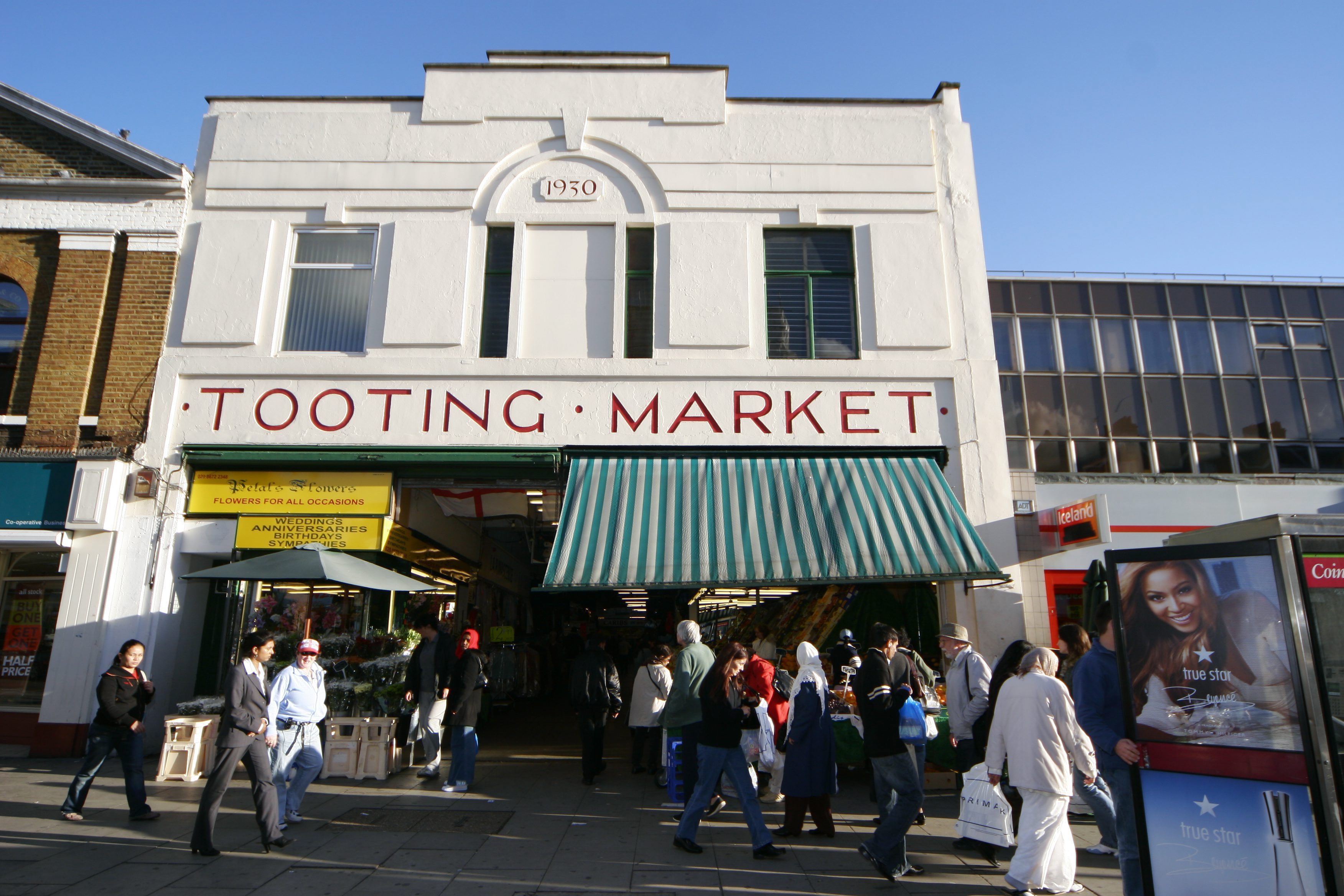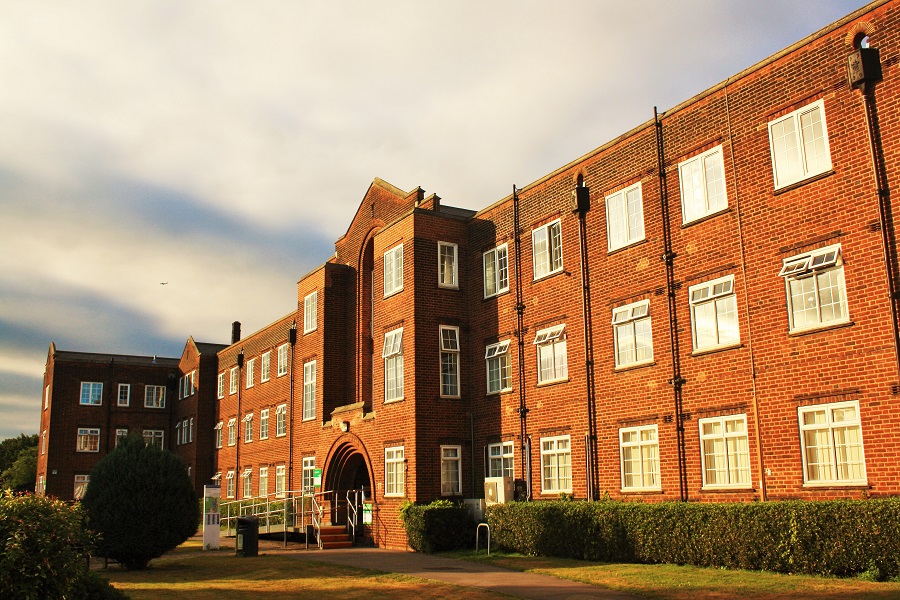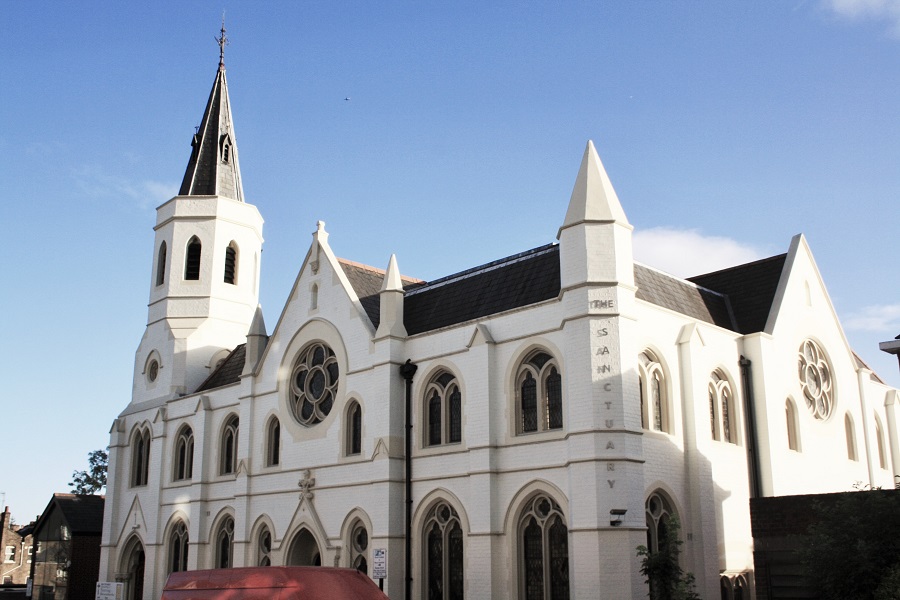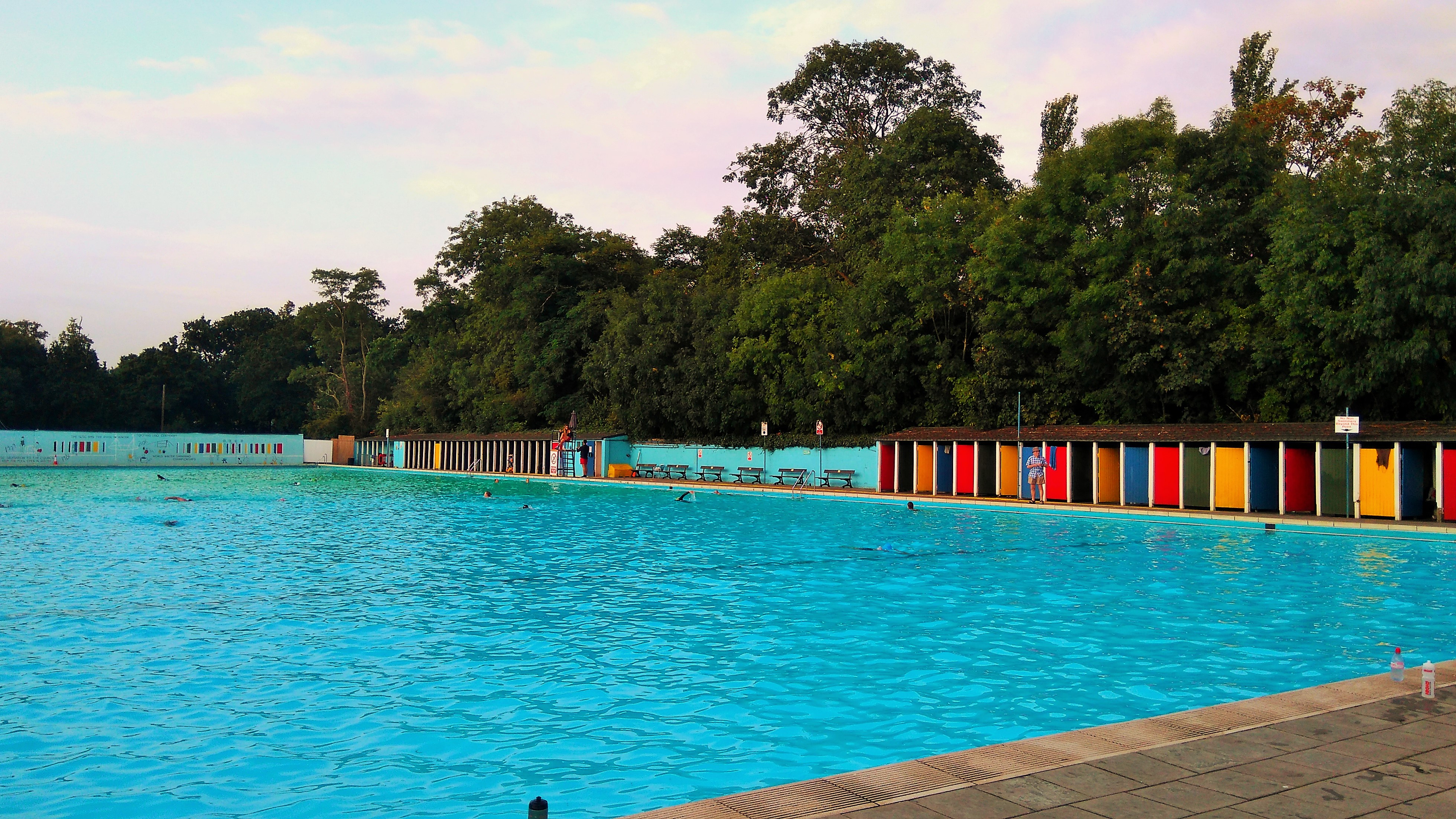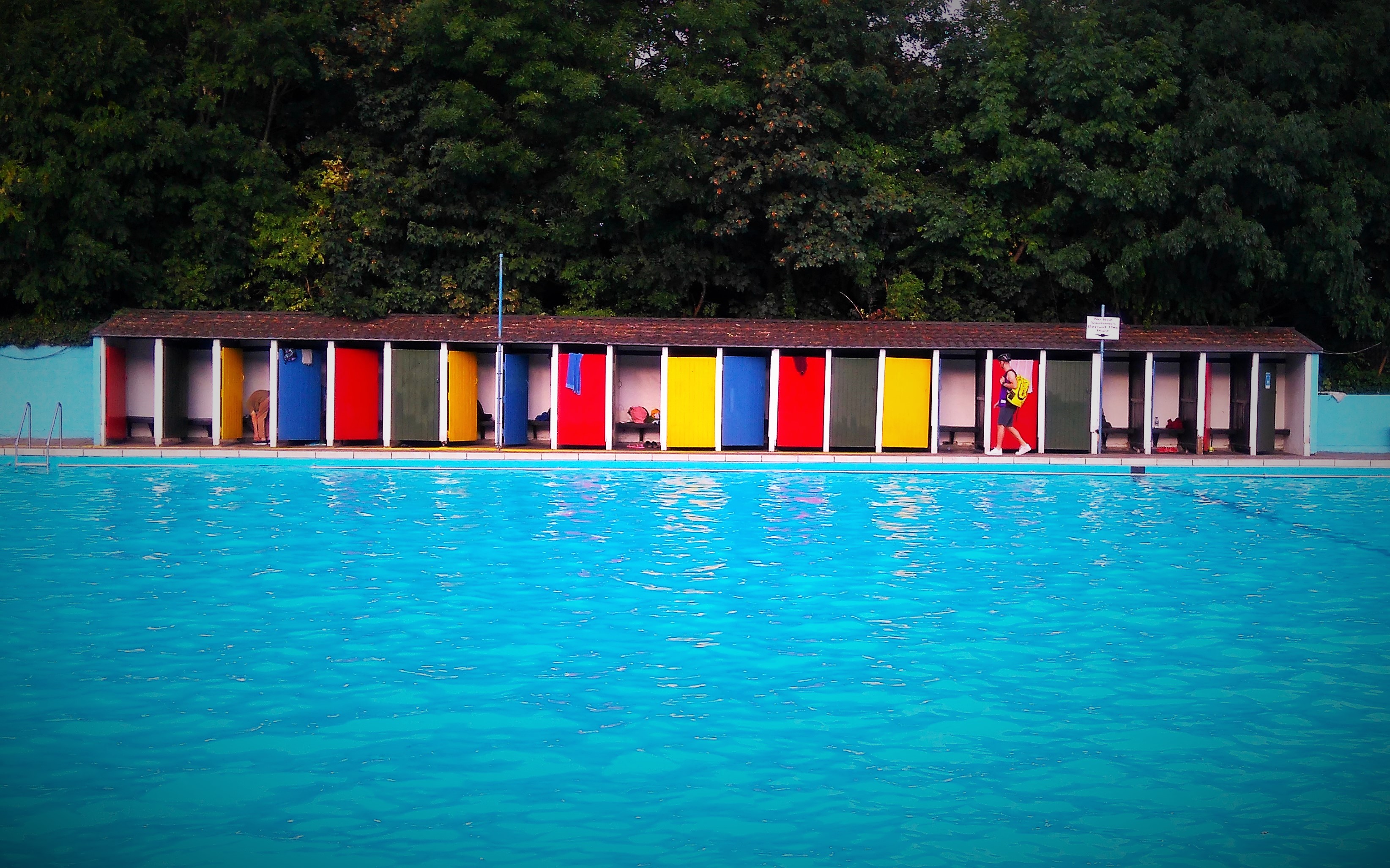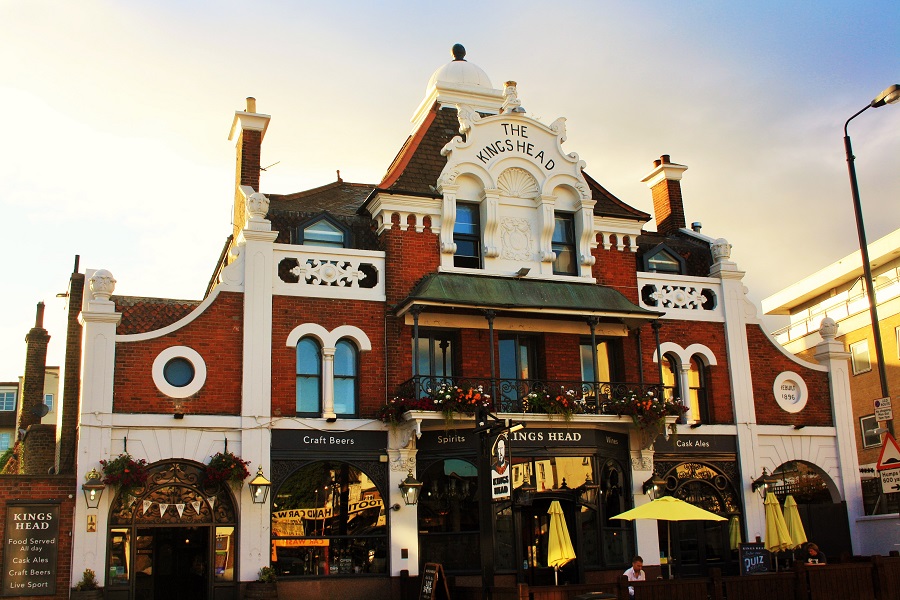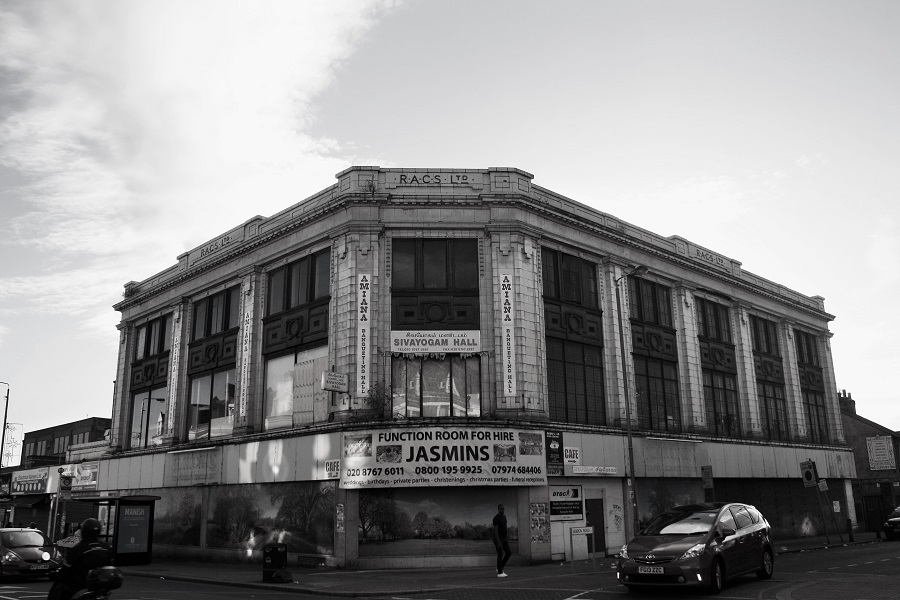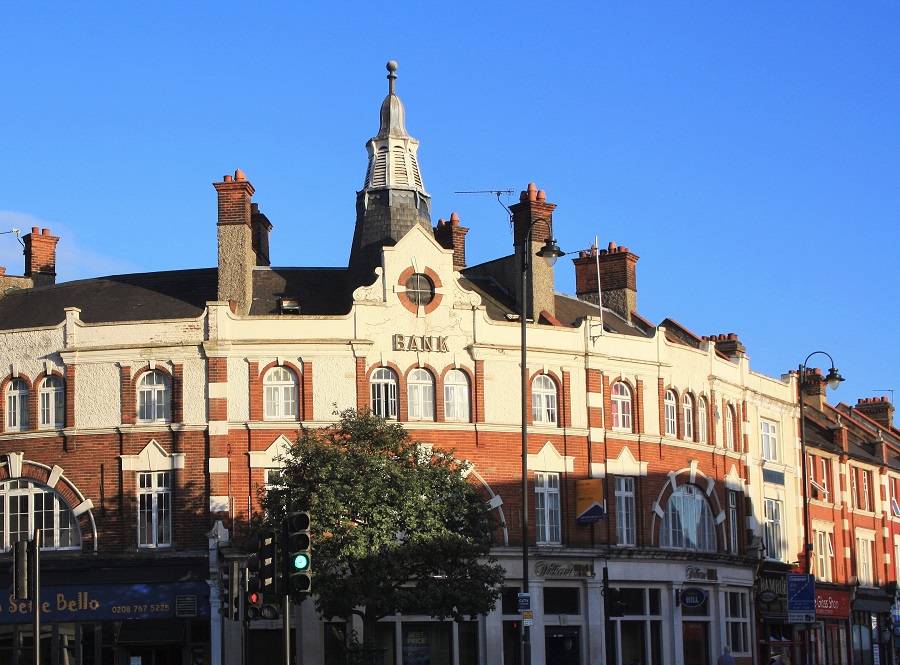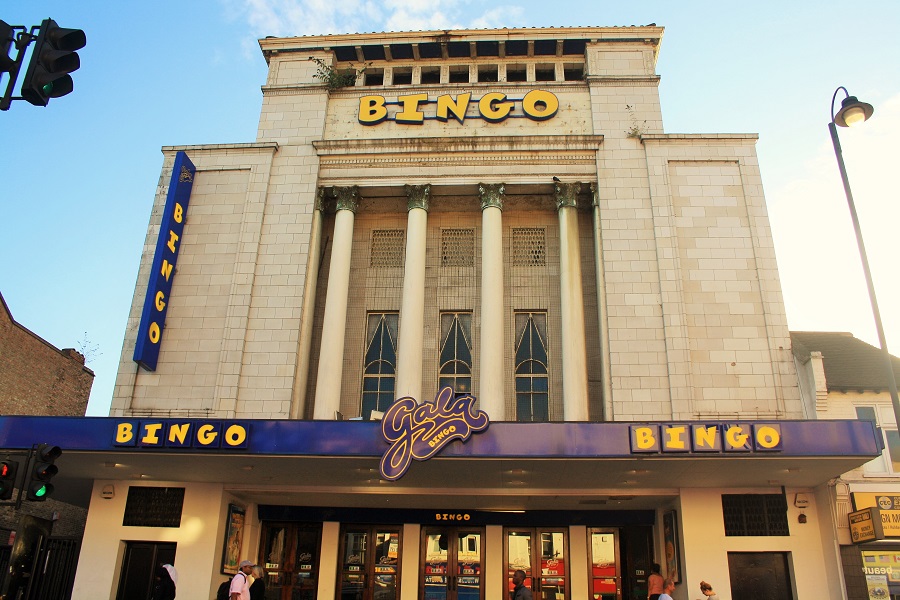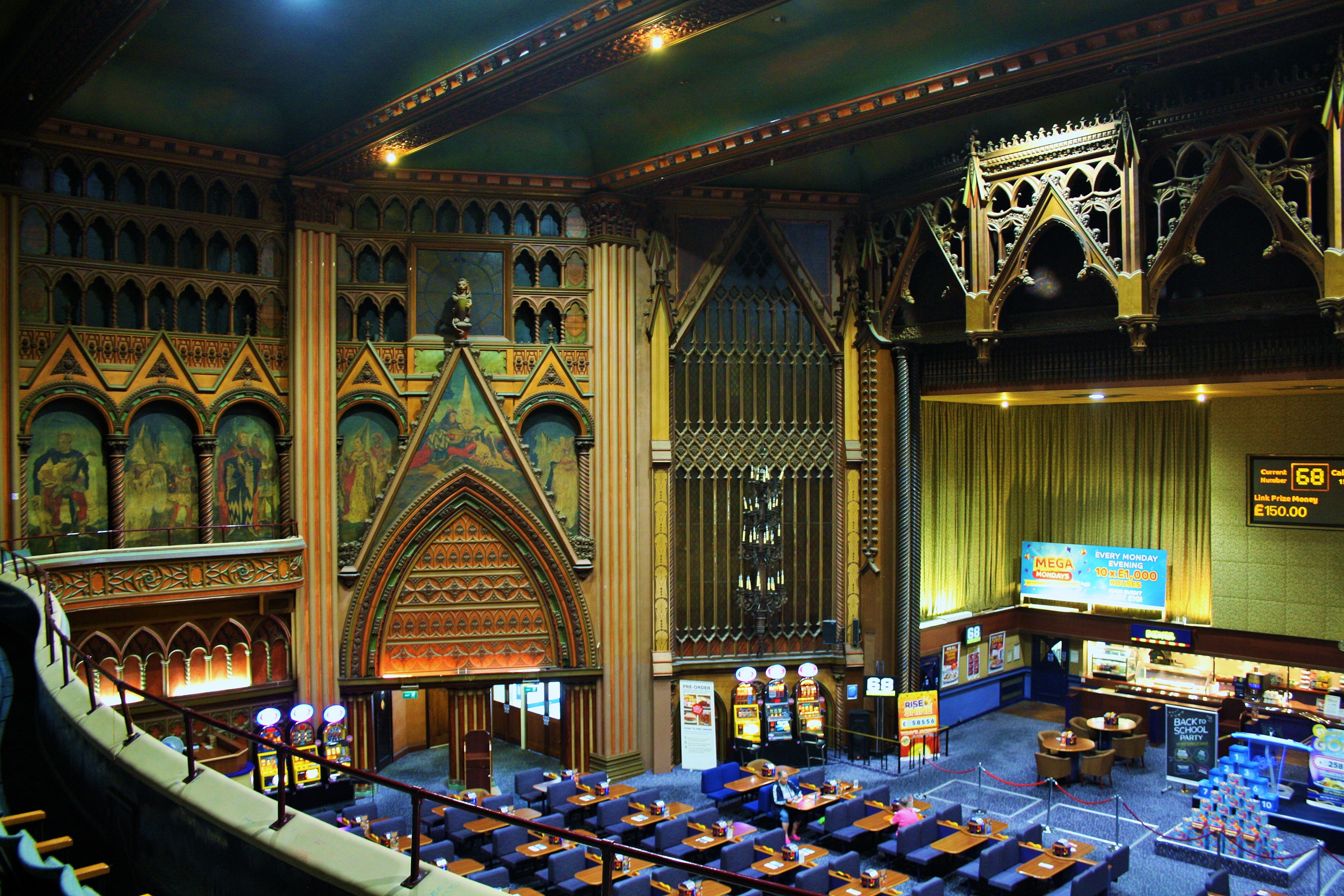Main author
Michael BrooksArchitecture of Tooting
Tooting developed as a settlement on the old coach route out of London to the south and west. The neighbourhood was still predominantly rural until the late 19th century when the railway arrived and development started in earnest.
During the next 20 years, many fine villas were demolished to make way for streets of typical Victorian terraced housing. In 1926, Tooting’s transport links were improved by the opening of two Underground stations on the Northern Line, both designed by Charles Holden.
There are rare examples of early Georgian development on Upper Tooting Road, and groups of Arts and Crafts-style homes on Nightingale Lane. The bulk of Tooting’s housing, however, consists of Victorian and Edwardian terraces, 1920s cottages and purpose-built maisonettes, together with pockets of new build apartments.
The highlights of Tooting's architecture include:
Contents |
[edit] Tooting market
Tooting market, as well as the adjacent Broadway market, has been established since 1930 as one of South London’s premier indoor markets, displaying the rich multiculturalism of the area.
[edit] Springfield University Hospital
Springfield University Hospital is a psychiatric hospital which opened in 1840 as the Surrey County Pauper Lunatic Asylum.
The asylum was built in the Tudor style, with twisted chimneys similiar to those at Hampton Court Palace (these were later removed, being considered dangerous, and not replaced). The facade was patterned with variegated brickwork and subtle angles.
In its time, Springfield boasted state-of-the-art design features such as steam which was circulated through the galleries to keep the hospital at a constant temperature and hot air which was injected through the floors.
The main building is Grade II listed and currently on Heritage England's 'At Risk' register. Many of the original hospital buildings are now disused and the Trust hopes to sell most of the site for redevelopment.
[edit] New Testament Assembly
A modernist-style church on Beechcroft Road, characterised by white rendered bricks, triangular features, circular main windows and black tiled spire.
[edit] Tooting Bec Lido
This open air swimming pool, located on Tooting Common, was built in 1906 and measures 100 x 33 yards, making it the second largest pool in the UK. It contains one million gallons of unheated fresh water. It was modernised in the 1930s with an Art Deco style, hence the iconic cubicle doors with alternating colours.
[edit] The King's Head
The King's Head is a Grade II listed pub on Tooting High Street. It was designed and built in 1896 by W. M. Brunton, a prolific designer of public houses, and is considered to be his masterpiece with his least altered interior.
The pub is characterised by its florid symmetrical composition and brashness of detail typical of late-19th century gin palaces. Built of red brick with stucco ornamentation and a slate roof that is steep and hipped, rising to a dome.
[edit] Sivayogam Wedding Hall
This grand hall building on the Tooting High Street was a Hindu Tamil temple and wedding venue for 17 years until they were evicted by the council in 2010. It has been derelict ever since.
[edit] Old Barclay's Bank building
Located on Amen Corner, this high and curved former Barclay's Bank building is characterised by its tall cupola and symmetrical chimney arrangements.
[edit] Gala bingo
The Gala Bingo hall is a spectacular Grade I listed former 1930s cinema and concert hall, which once played host to Frank Sinatra and The Rolling Stones.
The heavily gilded foyer is lined with Gothic mirrors and fake leaded windows, along with a pair of sweeping marble staircases.The striking auditorium includes elaborate cathedral porches, gilded arches, medieval murals and glass chandeliers.
It is home to one of the last few working Wurlitzer organs in London, although its chambers are buried beneath the stage.
All photographs by Michael Brooks.
Featured articles and news
CIOB report; a blueprint for SDGs and the built environment
Pairing the Sustainable Development Goals with projects.
Latest Build UK Building Safety Regime explainer published
Key elements in one short, now updated document.
UKGBC launch the UK Climate Resilience Roadmap
First guidance of its kind on direct climate impacts for the built environment and how it can adapt.
CLC Health, Safety and Wellbeing Strategy 2025
Launched by the Minister for Industry to look at fatalities on site, improving mental health and other issues.
One of the most impressive Victorian architects. Book review.
Common Assessment Standard now with building safety
New CAS update now includes mandatory building safety questions.
RTPI leader to become new CIOB Chief Executive Officer
Dr Victoria Hills MRTPI, FICE to take over after Caroline Gumble’s departure.
Social and affordable housing, a long term plan for delivery
The “Delivering a Decade of Renewal for Social and Affordable Housing” strategy sets out future path.
A change to adoptive architecture
Effects of global weather warming on architectural detailing, material choice and human interaction.
The proposed publicly owned and backed subsidiary of Homes England, to facilitate new homes.
How big is the problem and what can we do to mitigate the effects?
Overheating guidance and tools for building designers
A number of cool guides to help with the heat.
The UK's Modern Industrial Strategy: A 10 year plan
Previous consultation criticism, current key elements and general support with some persisting reservations.
Building Safety Regulator reforms
New roles, new staff and a new fast track service pave the way for a single construction regulator.
Architectural Technologist CPDs and Communications
CIAT CPD… and how you can do it!
Cooling centres and cool spaces
Managing extreme heat in cities by directing the public to places for heat stress relief and water sources.
Winter gardens: A brief history and warm variations
Extending the season with glass in different forms and terms.
Restoring Great Yarmouth's Winter Gardens
Transforming one of the least sustainable constructions imaginable.







